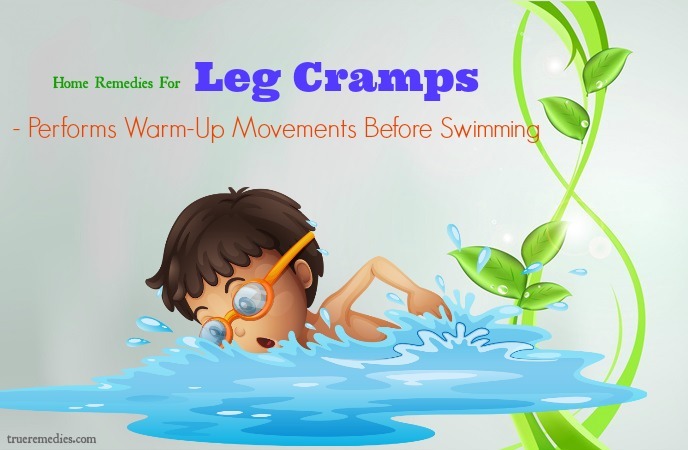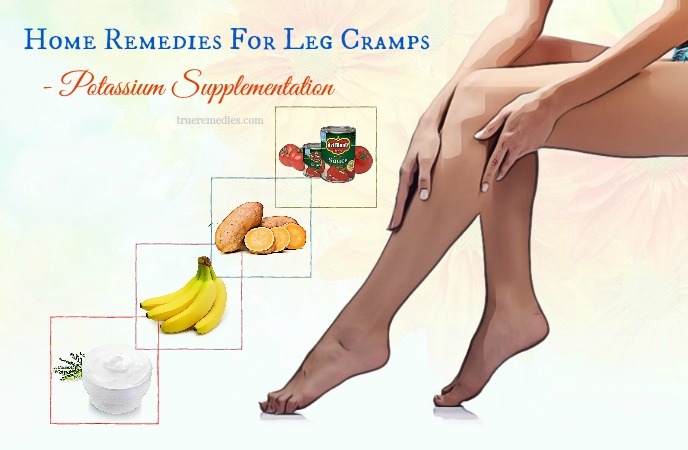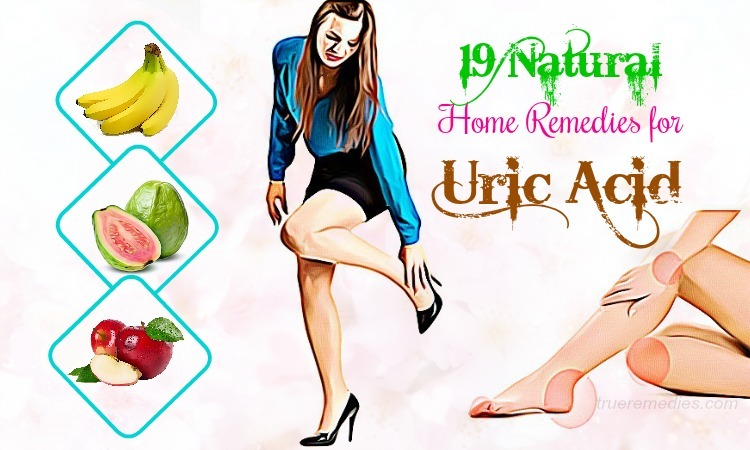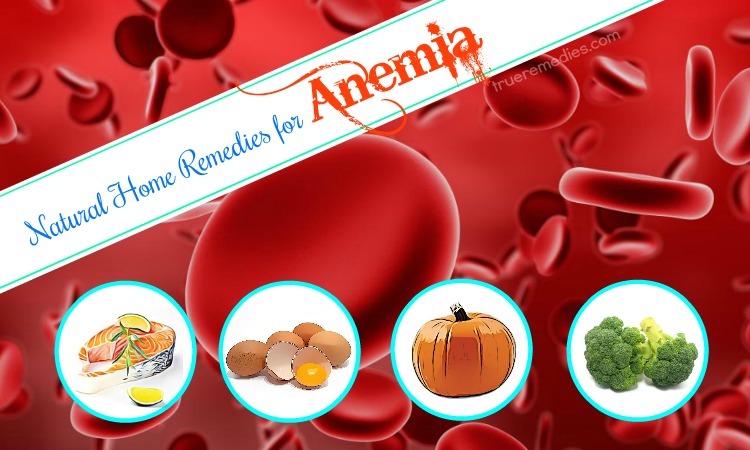Contents
Almost everyone has had leg cramps at least once. Leg cramps are sudden muscle spasms. This causes intense pain in one's muscles, causing the patient to no longer move. Although every muscle can be cramped, but it usually occurs in the legs, thighs, hands, feet, and abdominal muscles. Leg cramps are a common condition in some people, especially athletes and pregnant women. Not only painful, leg cramps can also be dangerous to you in some cases such as when you are driving or when you are swimming.
If you are worried about this condition, and you want to overcome or prevent the pain caused by this condition, this article is for you. In this article, we will provide you with effective home remedies for leg cramps that have been proven by many people. However, first, let's take a look at basic information about this condition so that you can get a better overview of the condition. This information is presented in a very simple manner, so even if you do not have much knowledge of medicine, you can still understand it.
What Is Leg Cramps?
Leg cramps are abrupt muscle spasms, causing severe pain in the muscles of the legs, making the movement of the legs difficult. This condition usually occurs suddenly and lasts from a few seconds to a few minutes. With leg cramps, you may have mild or severe convulsions. This problem causes a sudden and violent pain in nearby muscles.
Leg cramps are a very common phenomenon. It is estimated that 95% of the population has experienced a leg cramp. Leg cramps are a condition that can occur at any age. As your age increases, leg cramps can occur more easily. However, children may also have cramps. Any muscle under the control of skeletal muscle can be cramped. Cramps in the feet are common and it usually occurs at night when we are sleeping. Leg cramps that occur at night are usually sudden contractions or tightening of the muscles in the calf. Leg cramps can sometimes occur in the thighs or feet and usually occur when you are sleeping or awake [1].
What Are Common Causes Of Leg Cramps?
Here are some common causes of leg cramps:
- Exercise, Injury Or Excessive Muscle Manipulation
Leg cramps often involve the use of excessive muscles resulting in tired muscles, such as in sports or excessive physical activities. This type of cramping may occur during movement or afterward, sometimes several hours later. Leg cramps during exercise often occur in large muscles such as the legs and thighs. At this time, the muscles are too tired. The movement that is too long and too strong, and the movement done when the weather is too hot or too cold cause the body to lose salt and levels of K, Mg, Na, Ca in the blood to reduce. Exercise in hot weather causes the body to sweat a lot, causing the body to lose water and salt. This makes the body more prone to cramping.
TrueRemedies Partner Solutions

Need a Help from the Leading Expert Online, Available 24/7?
They’re all here and ready to answer your questions online or by phone. Keep asking questions until you get the answer you need.
Contractions after a leg injury can also cause leg cramps. In this case, the contraction tends to minimize movement and stabilize the area of injury. This is like a defense mechanism of the body.
High mobility also causes lactic acid deposition in the muscles, leading to disturbances in signaling between nerves and muscles, so even though the brain wants to relax after movement, the muscles continue to shrink. This causes pain.
- Stand Or Sit For Too Long
If you stand or sit for too long, you may have leg cramps. This condition may not happen right away, it usually happens when you are sleeping at night. Cramping during rest is a very common phenomenon, especially in older people, but this condition can also occur at any age, including children.
Although not being life threatening, leg cramps at night can be painful for you. They break your sleep and they can recur many times a night or for many nights. To explain this, experts say that standing or sitting too long causes the muscles not to function. They are “tense”. This leads to cramping.
- Pregnancy
Cramps usually occur in pregnant women due to the deficiency of nutrients such as calcium and magnesium, or the compression of the uterus onto the blood vessels in the legs. This usually happens in the last months of pregnancy.
- Sudden Exposure To Low Temperature Environment
You often encounter this while swimming. If you have leg cramps while swimming, this is very dangerous because this can cause drowning if not treated in time.
- Due To Sodium Deficiency
Sodium loss (the most common chemical component of body fluids outside the cell) also dehydrates the body. Cramps may also occur when the body is characterized by abnormal fluid distribution (due to cirrhosis), resulting in fluid accumulation in the abdominal cavity (ascites). Similarly, cramps are a common complication in the treatment of kidney disease. Low levels of calcium or magnesium in the blood directly increase the stimulation of both nerve endings and stimulation of the muscles. This is common in older people and women during pregnancy. To reduce the symptoms, you must add these nutrients in the diet.
- Low Potassium Levels
Low potassium levels sometimes cause leg cramps. Low levels of potassium are associated with muscle weakness.
- Due To The Use Of Certain Drugs
People who take certain medications like statin, prednisone, and diuretics are prone to cramping. Besides, patients with diabetes, Parkinson's, low blood sugar, anemia, thyroid disease, circulation disorders, ..are likely to have leg cramps.
What Are Common Symptoms Of Leg Cramps?
Most cases of leg cramps occur in the calf. Besides sudden occurrence, you can feel or see hard blocks in the muscle tissue beneath the skin. You may experience other symptoms not mentioned. If you have any questions about the signs of the disease, please consult your doctor for more information.
Who Is At High Risk Of This Problem?
Leg cramps are a very common condition that can affect people of all ages. However, athletes and pregnant women are at high risk for the condition. You can control this disease by minimizing risk factors.
When To See A Doctor?
You should see a doctor if you have these symptoms:
- Feeling uncomfortable
- Leg swelling, skin color is changed
- The muscle is weakened
- Leg cramps occur frequently
- The condition does not improve with self-care methods
There, you probably have the most comprehensive view of this situation. It is time to find out what the effective home remedies for leg cramps are. Take a look at TrueRemedies.com!
Top 10 Effective Home Remedies For Leg Cramps And Pain
1. Massage Exercises
This is the first remedy in this list of home remedies for leg cramps. If you are cramping, you will feel very painful. Then, your legs can not move. To get out of this situation quickly, you need to do the following:
- Stop exercising; try to relax your legs to relax the muscles that are cramping.
- Gently massage the muscles, if you have hot oil, then apply oil to the skin of the cramp muscles and massage gently.
When you have cramps on your thighs, you need someone else to pull your legs straight, one arm lifting your heels, the other pressing down your knees. After a leg cramp, you should rest about 1 hour to help he muscles and the central nervous system restore.
Read more: Top 29 Natural Home Remedies For Knee Pain Relief
2. Home Remedies For Leg Cramps – Drink Enough Water
Among home remedies for leg cramps, this is one of the easiest remedies. Many experts have pointed out that lack of water is one of the main causes of leg cramps. Water accounts for most of the fluids, lubricants and buffers in joints and muscles. Drinking water before, during and after exercise will help reduce cramping and reduce fatigue. Therefore, drink enough water to protect your muscles. Under normal conditions, the amount of water needed for per kilogram of body is 40 milliliters, so a person weighing 50 kilograms should drink 2 liters of water per day. In addition, you also need to “listen” to the body's needs or observe your urine. If your urine is dark yellow, you are dehydrated.
Most people think that “drink water as much as possible”. Actually, no. Drinking too much water a day will put pressure on the kidneys, causing the body to work a lot. This also dilutes the electrolytes in the blood, decreases the amount of sodium, causing many consequences that easily make you “poisoned”.
3. Electrolyte Supplementation
This is another must-try home treatment in this list of home remedies for leg cramps. Leg cramps can also be caused by sodium and potassium deficiencies, so you should regularly supply the electrolyte water, especially before, during, and after exercising or playing sports [2] [3]. Note that drinking electrolyte easily causes people to vomit, so if you are suffering from nausea, you should not drink it. Only drink electrolytes when your digestive system is stable. You should drink electrolytes into small sips.
4. Home Remedies For Leg Cramps – Practice Dancing
This remedy is one of little – known home remedies for leg cramps. When the nerves of the muscles begin to get tired, cramps can occur. You can limit this by doing plyometric dance moves several times a week. This dance was performed by a Russian sports expert named Yuri Verkhosansky. Plyometric is a “muscle sock training method.” The two typical moves for this type of exercise are the Drop Jump – descends from a certain height, and the Depth Jump – jumps from a certain height and pops up as soon as the player hits the ground. Because of its nature, experts recommend that you do not practice Plyometric if you cannot do Squat with a weight of 1.5 times your body weight. However, today there are more athletic forms of the Plyometric type with light intensity. These exercises are most suitable for everyone. You should refer to these exercises as they are really helpful.
Don’t skip: 29 Home Remedies For Arthritis Pain In Fingers, Back & Legs
5. Performs Warm-Up Movements Before Swimming
This is the next treatment in this list of home remedies for leg cramps. Before swimming, take 30 minutes to perform warm – up movements. You can do short runs and perform exercises to flex the joints. When swimming, it is important to adjust swimming movements to help the body adapt to the underwater environment. At a certain time when the body is consuming too much energy, then you need to supplement this energy. When you feel tired, reduce the speed of your swim, swim to the shore or near the rescue area, and then relax your body for a few minutes before leaving the pool. If you feel cold, you must leave the pool immediately. Look for a warm place to warm – up your body. You can drink a little warm tea to warm – up your body.
6. Home Remedies For Leg Cramps – Hot Or Cold Compresses
This sounds strange when it comes to home remedies for leg cramps, but it works [4] [5]. If you regularly have leg cramps at night then this remedy is for you. Every day, before going to bed, you should spend 5 minutes doing simple exercises to tighten your calf muscles. If you are awakened by leg cramps, apply a few tips for pain relief: heat or cold compresses into the cramped leg. You can also shake and massage the leg with cramps, then raise your legs. This will make bad leg cramps disappear quickly.
7. Vitamin D Supplementation
Vitamin D is also known as the sun Vitamin. This is a very special vitamin compared to other types. In addition to the ability to help strengthen bones by regulating calcium metabolism, Vitamin D also plays a role in the immune system. This vitamin can control and coordinate nearly 1,000 genes, which are found throughout the tissues and cells of the body [6]. Without vitamin D, the muscle will be weak and very susceptible to cramps. To supplement vitamin D, you should regularly eat the following foods:
- Fish
You should eat high-oil fish, including herring, mackerel, salmon and tuna. These fish are great sources of vitamin D. A herring containing 306 IU of vitamin D. 100 grams of canned salmon provides about 91% of the required amount of nutrients. Mackerel is also a reliable source of vitamin D.
- Mushroom
Mushrooms are one of the most abundant sources of vitamin D. While growing, mushroom are exposed to many of the ultraviolet rays of the sun, so the amount of vitamin D in the mushroom is very high. White mushrooms contain a rich source of vitamin D.
- Cod Liver Oil
Cod liver oil is one of the most common sources of vitamin D. It is usually available in the form of capsules. 1 teaspoon cod liver oil will provide you with 450 IU of vitamin D.
- Tofu
Tofu products such as tofu and tempeh are high in calcium and vitamin D. 100 grams of tofu can provide you with 39% of your daily vitamin D intake.
- Oatmeal
Most oatmeal and oatmeal products can supplement vitamin D. Along with vitamin D, oats also provide other healthy vitamins and nutrients. A packet of oatmeal provides 154 IU of vitamin D.
Here are some of the typical foods that you should add to your diet to add vitamin D to your body to reduce the risk of leg cramps. This is considered one of the most effective home remedies for leg cramps.
Learn more: 26 Natural Home Remedies For Plantar Fasciitis Pain
8. Vitamin B12 Supplementation
Vitamin B12 is very effective in treating cramps. Vitamin B12 is water-soluble so your body can not store it much [7]. Therefore, you need to supplement this vitamin with the following rich sources:
- Scallop
In 84 g cooked scallop contain about 84.1 mcg vitamin B12. Not only B12, the scallop is rich in potassium, in 84 g canned clams contain 534 mg potassium.
- Oysters
There are 21.84 mcg Vitamin B12 in 84 g of cooked oysters.
- Crab
In 84 g crab meat contains 10.3 mcg of vitamin B12. In addition, crabmeat also contains vitamins A, B, C, and magnesium.
- Pilchard
In 84 g pilchard, there are 7.6 mcg vitamin B12.
- Salmon
The amount of vitamin B12 in 300 g of salmon is 5.4 mcg. Salmon is a source of vitamin D, fatty acids, and omega-3 which promote brain function and fight inflammation.
- Tuna
There are 2.5 mcg of vitamin B12 in 84 g of canned tuna. Tuna is a rich source of omega-3 fatty acids, including eicosapentaenoic acid (EPA) and docosahexaenoic acid (DHAs). These acid help improve the body's health.
- Beef
There are 1.3 mcg of vitamin B12 in 84g of beef. Beef is also rich in zinc, it also contains a lot of protein and riboflavin B vitamins.
- Egg
There are 6 mcg of vitamin B12 in a boiled egg.
9. Home Remedies For Leg Cramps – Potassium Supplementation
The next one in this of home remedies for leg cramps is potassium supplementation. A lack of potassium in the diet leads to a lack of potassium in the blood, leading to muscle weakness and muscle spasms [8]. Thus, you should eat these following potassium foods to help prevent body cramps:
- Sweet Potato
Surprisingly, sweet potato is No. 1 on the list of foods high in potassium. A sweet potato package can contain 694 mg potassium, fiber, and beta-carotene that can provide enough energy for you during the day.
- Tomato Sauce
Fresh tomatoes are good for health, this fruit is a great source of potassium. A quarter of a cup of tomato powder provides 664 mg of this important nutrient, while half a cup of crushed tomato only contains 549 mg, and tomato juice only contains 400mg of this nutrient. Therefore, if you love tomato dishes and want to get more potassium for your diet, use the tomato sauce instead of the other cooking methods.
- Beans
All beans are good for your cardiovascular system, and of course they cannot be absent from the list of foods containing potassium, so you should be flexible to use them in your daily meals.
- Yogurt
One cup of nonfat yogurt contains 579mg of potassium, while high fat yogurt contains less of this content.
- Clams
For every 100g of clam contains about 534mg of potassium.
- Banana
Banana is one of the most well – known fruits because of its abundant potassium. An average banana has 400 mg of nutrients that are beneficial to the heart. Bananas are also a type of food that can fill up the empty stomach when you are hungry, helping to promote metabolism in the body.
- Fish
In 100 g of halibut or tuna contains 500mg of potassium. Potassium is abundant in fish and seafood, so regularly add them to your diet.
10. Calcium And Magnesium Supplementation
These two nutrients have the opposite effect. Calcium has the effect of muscle contraction and magnesium has the effect of relaxing the muscle. Therefore, it is important to balance these two nutrients in the body.
To add calcium to your body, you can add some of the following foods to your diet:
- Watercress
Green leafy vegetables such as spinach, kale, radish, lettuce, celery, broccoli, cabbage and asparagus are rich in calcium. Among them, watercress is the most calcium-rich food. A glass of cut watercress provides 41 mg. Many other green leafy vegetables are also high in calcium, including kale (14% DV), green radish (10% DV), and chrysanthemum (6% DV). To add a large amount of calcium, you can mix these vegetables together to make a delicious salad in your meal.
- Cheese
Cheese is one of the foods made from milk that is rich in calcium. Moreover, unlike other dairy products, the cheese has low sugar content. This is extremely good for those who cannot absorb this substance. Low fat cheese can contain up to 1086 mg of calcium.
- Soy Products
Soy products such as tofu are an excellent source of calcium. 100 grams of tofu contains up to 350 mg or 35% calcium. Meanwhile, 100 grams of fried tofu contains 372 mg or 37% calcium. Other soy products, such as soy-free soy milk or non-fat soy milk, can also contain up to 13% calcium.
- Broccoli
Some of us do not like the smell of broccoli, but you should know that they contain a lot of calcium. A bowl of cooked broccoli can provide 62 mg or 6% of calcium. Broccoli is not high in calories. You can add this vegetable in your diet to supplement calcium and other nutrients to your body.
To add magnesium to your body, you can add some of the following foods to your diet:
- Rice, Wheat, And Oats
Rice, wheat, oats are great magnesium supplements. Every 100 grams of raw rice contains 781mg of magnesium (which accounts for 195% of your body's daily magnesium intake), while 100 grams of wheat contains 611mg of magnesium and 100g of oats containing 235mg of magnesium.
- Dried Herbs
Dried herbs also contain female vitamins that promote good health. In it, the dried coriander contains the most magnesium, in 100g of coriander contains 694mg. In addition to coriander, dried chives, mint, sage, and basil also contain quite a lot of magnesium.
- Seeds Of Pumpkin, Squash, And Watermelon
100g of pumpkin or squash seeds contains 535mg of magnesium, and 100g of watermelon seeds contain 515mg of this nutrient. Therefore, do not ignore this delicious and useful food.
- Cocoa Powder And Dark Chocolate
Both foods are increasingly valued for their health benefits. 100g of cocoa powder provides 499mg of magnesium and 100g of black chocolate powder provides 327mg of this nutrient.
The above-mentioned home remedies for leg cramps are claimed to be able to reduce the symptoms of this problem. Choose some of them and alternate them in your treating to see how effective they are. If you have any contributing ideas about our article of “Top 10 Effective Home Remedies For Leg Cramps And Pain” introduced in Home Remedies Category, do not hesitate to drop your words below this post. We will answer as soon as we could.












